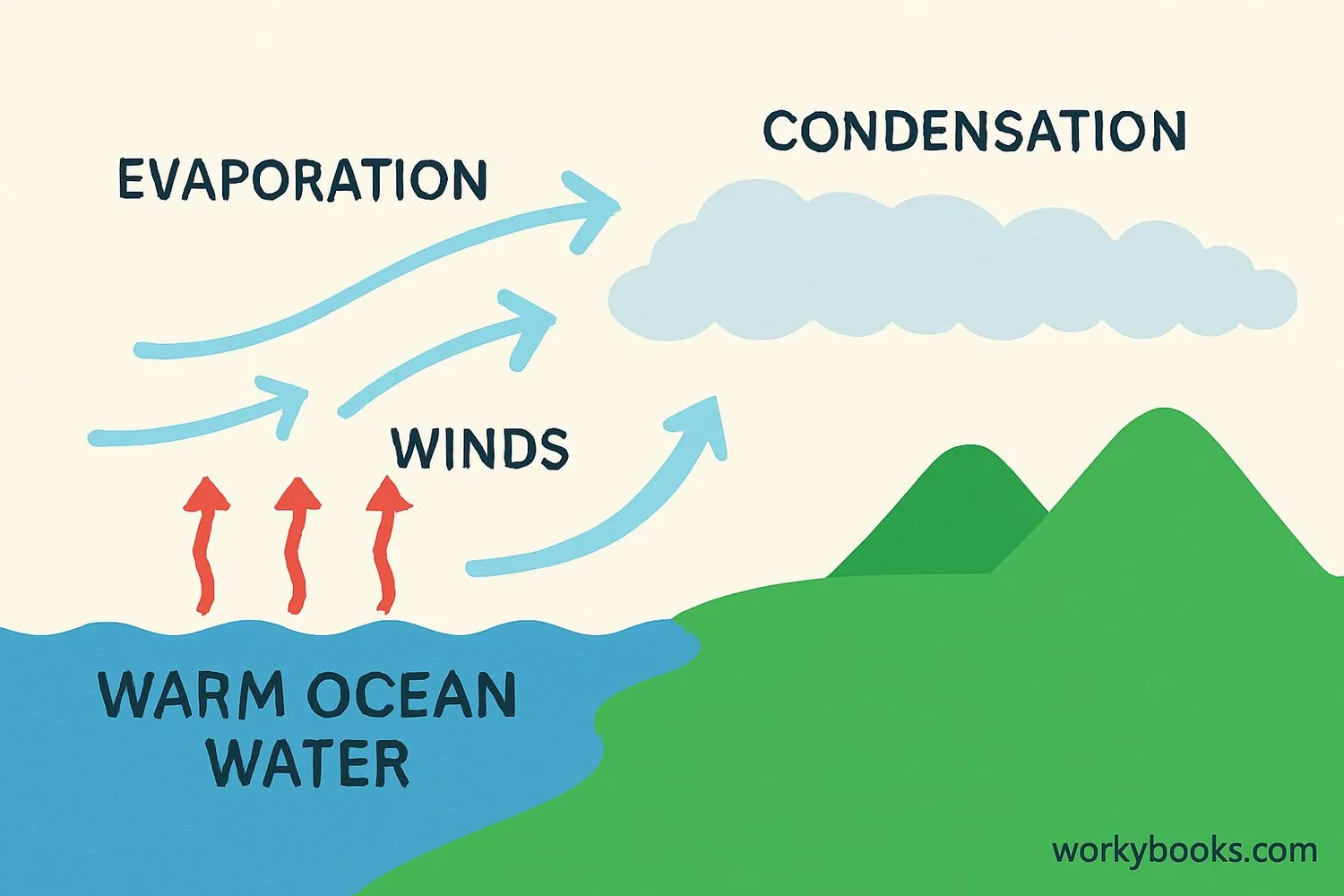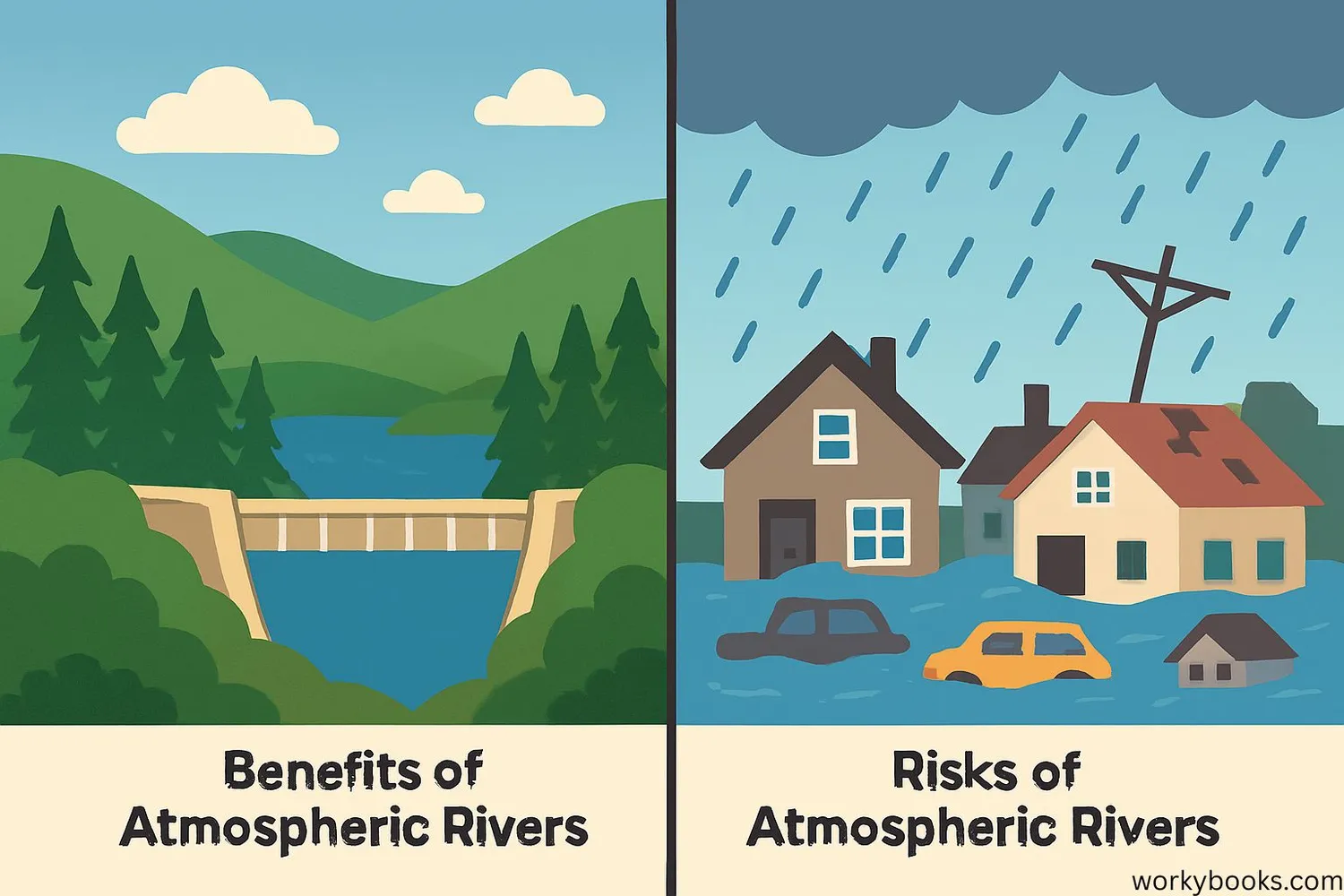Atmospheric Rivers - Definition, Examples, Quiz, FAQ, Trivia
Discover the amazing rivers in the sky that bring rain and snow to our planet!
What Are Atmospheric Rivers?

Atmospheric rivers are like giant rivers in the sky! They are long, narrow bands of moisture in the atmosphere that transport huge amounts of water vapor from the tropics to other parts of the Earth.
Imagine a river in the sky that's 250-375 miles wide and can be thousands of miles long! These "sky rivers" carry more water than the Amazon River - the largest river on land. When they reach land, they release this moisture as rain or snow.
Did You Know?
A strong atmospheric river can carry 15 times more water than the Mississippi River! That's enough water to fill 250,000 Olympic-sized swimming pools every day!
How Atmospheric Rivers Form

Atmospheric rivers form through a fascinating weather process:
Warm Ocean Water
Sun heats ocean water near the equator, causing evaporation
Wind Patterns
Strong winds carry water vapor upward into the atmosphere
Moisture Flow
Jet streams and weather patterns move the moisture across the ocean
Land Interaction
When the moisture reaches land, mountains force it upward
Precipitation
The rising air cools, causing the vapor to condense into rain or snow
The strength of atmospheric rivers is measured on a scale from 1 to 5, similar to hurricanes. Category 1 is weak but beneficial, while Category 5 can cause dangerous flooding.
Weather Patterns
Atmospheric rivers are part of Earth's water cycle, constantly moving water from oceans to land and back again through evaporation, transportation, and precipitation.
Why Atmospheric Rivers Matter

Atmospheric rivers play a crucial role in Earth's weather systems and water supply:
Water Supply
Provide 30-50% of annual rainfall in western U.S. states
Snowpack
Build mountain snowpack that provides water during dry months
Ecosystem Support
Help maintain healthy forests and wildlife habitats
However, strong atmospheric rivers can also bring risks:
• Heavy rainfall causing floods and mudslides
• Rapid snowmelt leading to flooding
• Damage to homes, roads, and infrastructure
• Disruption to daily life and transportation
Scientists study atmospheric rivers to better predict extreme weather events and help communities prepare.
Atmospheric Rivers Quiz
Test your knowledge about atmospheric rivers with this weather science quiz! Answer all 5 questions to see how much you've learned.
Frequently Asked Questions
Here are answers to common questions about atmospheric rivers:
Amazing Atmospheric River Facts
Discover some fascinating facts about these sky rivers:
Water Superhighways
A single strong atmospheric river can carry up to 15 times the average flow of water at the mouth of the Mississippi River! That's enough water to supply 10-20 million people for a year.
Space Technology
NASA uses satellites to study atmospheric rivers from space. These satellites measure water vapor in the atmosphere and help scientists track these "rivers in the sky" as they develop.
Historical Storms
The famous "Pineapple Express" that hit California in 1862 was actually an atmospheric river. It caused the largest flood in California's recorded history, turning the Central Valley into an inland sea!
Massive Scale
Atmospheric rivers are typically 250-375 miles wide but can stretch for over 1,000 miles in length. That's longer than the entire west coast of the United States!





